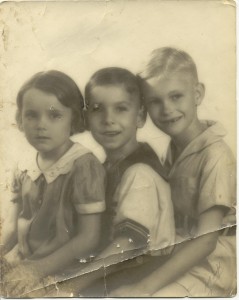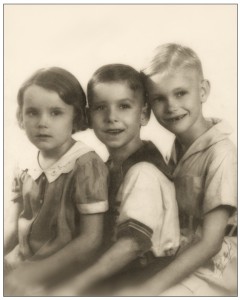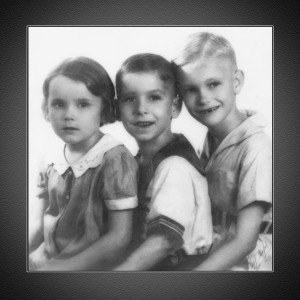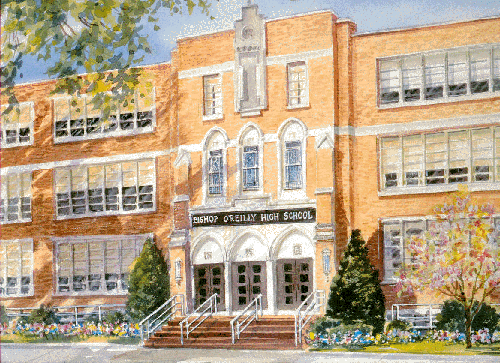This is another guest posting by James Lynch, my high school English teacher. Feel free to leave comments or you may email him directly at at jimadalynch(at)gmail.com
In their eleven-volume series, “The History of Civilization,” Will and Ariel Durant detail man’s attempts to create stable and secure societies. Throughout recorded history, they recount, nations and empires have striven to replace tribal barbarism with societies in which people can live in peace, harmony and economic self-sufficiency. Along the way, historians, poets, scientists, theologians and philosophers have left records of those attempts.
As a species, human beings have violence and predation built into their DNA. Durant relates that man’s history can be traced back a million years before Christ, but that farming as a means of survival began only 25,000 years before. How did our ancestors survive for 975,000 years prior to raising crops? Brutality and hunting were indelibly imprinted in our evolving humanity during that span. In the relatively paltry 2,000 years of the Christian era, those inbred tendencies and instincts have battled with man’s attempts to tame the beast within. Indeed, Durant characterizes contemporary humans as “trousered apes.”
Throughout modern history, societies have attempted to temper those tendencies, as increasing intellectual ability gave rise to rational thought, scientific discovery, and philosophical investigation of man and his place in the universe. It has been a steep learning curve, as wars, destruction and privation dominated the centuries, with the twentieth century ranking as the bloodiest.
Beginning with Gutenberg, the means of exploring the emerging ideas of scientists, mathematicians, economists and philosophers began to gain wider dissemination, and with them came the gradual understanding that humankind had to recognize and cope with its inherently violent disposition. With burgeoning scientific discovery and increasing economic autonomy, western societies realized that the accumulation and sharing of knowledge held the keys, not just to increased wealth and productivity, but to the possibilities of mutual understanding and peaceful coexistence among peoples and nations as well.
In order to preserve those materials, the great universities of Europe eventually became the repository of the accumulated wisdom of prior ages. The genius of Plato, Socrates, Aristotle, Homer, Horace, Virgil, Cicero and Aquinas, as well as Shakespeare, Milton, Chaucer, Cervantes, da Vinci, Swift, Hobbes, Descartes, Galileo, Locke, Darwin, Tolstoy, Voltaire and many others provides invaluable insight in our quest to understand the nature of humanity. The ugly as well as beautiful truths they have discovered are the means for continuing intellectual evolution toward a better future.
In his “Idea of a University,” Cardinal Newman indicated that the role of a university was to help students “ . . . reach out toward truth, and grasp it.” Sadly, that purpose has been largely replaced in this country’s institutions of higher learning. A great college and university system has, in the last fifty years, become less concerned with academic pursuits than with physical expansion and sports. Major universities have become de facto minor-league farm teams for the National Football League, Major League Baseball and the National Basketball Association. The perversion of what should be the intellectual pursuit of knowledge afforded by such schools is evident when sports announcers interview professional athletes after a televised game. The level of discourse is often cringe-worthy. In the 1980’s, all-pro football player Dexter Manly of the Washington Redskins admitted that he could not read – after graduating from college. More recently, Terrell Owens announced that he is in financial straits, having burned through an estimated one hundred million dollars. It’s a safe bet that any of the college classes he attended did not include economics.
Instead of the core curricula of previous generations, many of today’ schools offer a variety of watered-down courses, as well as a soft grading system. It is striking that even under these circumstances nearly half of enrolled freshmen drop out before getting a degree. The reasons for such a situation are manifold: 1. the rise of self-esteem as the measure of individual worth (“Everybody gets a trophy” and “We don’t keep score”); 2. the fragmentation of family structure; 3. The lack of preparation by elementary and high schools; 4. public education’s mad chase after federal and state dollars attached to flawed assessment, resulting in teaching for the test, and outright cheating in order to meet governmentally-mandated guidelines. Add to that the voracious appetites of colleges and universities for ever-larger student populations to finance expansion, together with mushrooming sports facilities, and you wind up with a perfect storm.
To keep the college education engine purring, schools often provide a pulse and checkbook admissions policy. Consequently, many poorly prepared students require remediation before they can begin to compete. Anyone who believes that a few first semester remedial classes can erase thirteen years of poor education is engaging in wishful thinking. Once on campus, students can choose classes from columns A through Z which do not require much time, effort or thought. Instead of Greek and Roman classics, and masterpieces of Western civilization – all of which contribute to the cultural bedrock of America – students can now choose elective courses in more contemporary classics, such as 1. “The Simpsons and Philosophy” (Cal Berkeley); 2. “The History of Shopping” (Yale); 3. “The Unbearable Whiteness of Barbie” (Occidental College); 4. “Lesbian Novels Since World War II” (Swarthmore), 5. “Nip, Tuck, Perm and Tattoo” (Alfred University); and 6. “Marxist Concepts of Racism” (Harvard).
Shakespeare, et al. are seen as “Dead white European males” who can’t possibly offer a valuable educational experience to students, because of their collective “racism, misogyny and lack of diversity.” As a result of such lowered standards and expectations, many graduates can’t identify the three branches of the federal government, provide the decade in which the Civil War took place, or name the governor of their state. A recent study by professors at New York University and the University of Virginia found that nearly half of students show “no significant learning after two years of college.” Going to college has become a very expensive four-year “booze cruise” for far too many individuals, a good percentage of whom do not need a college degree in the first place.
Unfortunately, guidance counselors have convinced high school students that they need college in order to walk upright without dragging their knuckles. Trade schools for electricians, carpenters, plumbers and masons just don’t carry a sufficient social cachet. College has been oversold as a necessary step to a better life, but the truth is that it is simply not appropriate for everyone. If you’ve got the ideas and ingenuity necessary to build a better mousetrap, you may not need college at all. Bill Gates, Mark Zuckerberg and Steve Jobs (drop-outs all) speak to this point.
For those who need a degree – pre-med and pre-law students, engineers, architects, educators, accountants, math and science majors, for example – a core curriculum that includes significant classes should be mandatory. Classes in Greek and Roman classical literature, as well as survey classes in American and Western European history and literature are necessary for a well-rounded doctor, lawyer, teacher or scientist, as are required classes in philosophy, theology and government.
Steeped in the knowledge of ancient Greece and Rome, as well as the wisdom of European masters, the framers were able to provide the world with the freest and most prosperous nation in the history of mankind. The Declaration of Independence and the Constitution reflect all that is best in that canon. Proper education of citizens is the only way to insure that their vision continues for posterity. In a society where more people recognize Snooki than the Chief Justice of the Supreme Court, we’re truly at a crossroads. Can we keep the trousers on the apes, or do we regress to the forest primeval?
James Lynch
Fleetwood, PA






